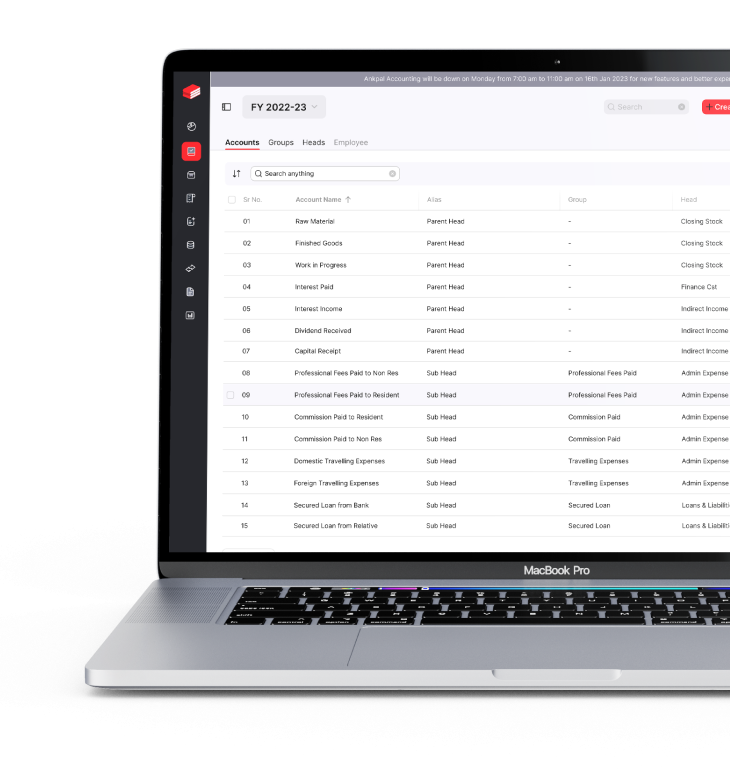
The term "e-invoicing" as used in the GST law refers to electronic invoicing. Similar to how an e-way bill is used by a business that is GST registered for transporting products from one location to another. Likewise, for business-to-business (B2B) transactions, some notified GST-registered businesses are required to produce an electronic invoice.
What is E-Invoicing Under GST?
The process of electronically verifying and authenticating B2B invoices and other crucial documents with the assistance of GSTN for usage on the GST portal is known as electronic invoicing, or e-invoicing. A system of electronic invoicing encompassing all kinds of businesses had been set into place at the 35th Council of GST.
Every invoice created via the Invoice Registration Portal (IRP) and controlled by the GST Network (GSTN) is assigned an identifying number under this electronic invoicing system.
All of the invoice data is instantly transferred from this site to the GST or e-way bill portals. This removes the need for human data entry when the invoice is generated through.
Who Should Generate E-Invoices and What are its Applicability?
All companies with a turnover of more than Rs. 5 crore are required by the new GST e-invoicing rules to generate an electronic invoice. Prior to this latest modification, this threshold was Rs. 10 crore.
There have occasionally been significant modifications to the threshold since the e-invoicing system was implemented. The table that follows details India's trajectory towards e-invoicing adoption.
| Phase | Applicable Turnover ( In crores) | Applicable Date |
| I | 500 | 01.10.2020 |
| II | 100 | 01.01.2021 |
| III | 50 | 01.04.2021 |
| IV | 20 | 01.04.2022 |
| V | 10 | 01.10.2022 |
| VI | 5 | 01.08.2023 |
How to Register for an E-Invoicing System?
If you are a taxpayer who is registered for GST and has a valid GSTIN number, registering on the e-invoicing site is a fairly easy process.
You can access the e-invoicing site with the same login credentials if you have registered your firm on the e-way bill (EWB) portal.
You can register directly with the e-invoicing system if you haven't already done so through the EWB portal. Both a mobile number and a GSTIN must be registered on the GST portal by the taxpayer.
1. Visit the Invoice Registration Portal (IRP).
2. Click on the "Registration" option.
3. Fill out the E-invoice Registration form.
4. Enter your business GSTIN and Captcha.
5. Click "Go" to proceed.
6. Verify the details displayed.
7. Request to Send OTP for verification.
8. Enter the OTP received on your registered mobile number.
9. After verification, create a username and password.
10. Re-enter your login credentials and click "Save" to confirm.
11. Access the e-invoicing system using your new login credentials.
Benefits of E-Invoicing for Businesses
Businesses adopting the e-invoice system started by GSTN will profit from the following:
- - In order to minimize mismatch errors, e-Invoice resolves and plugs a significant gap in data reconciliation under GST.
- - E-invoicing GST software can create an electronic invoice (e-invoice), which promotes compatibility and lowers data entry errors.
- - E-invoices allow for the real-time tracking of supplier-prepared invoices.
- - Automation and backward integration of the GST return filing process: any required invoice data will automatically appear in the various returns, particularly when part-A of the e-way bill is generated.
- - Easier access to legitimate input tax credits.
- - Reduced likelihood of tax authorities conducting audits or surveys since the data they need is accessible at the transaction level.
- - Quicker and simpler access, particularly for small businesses, to formal credit routes like financing or invoice discounting.
- - Better client interactions and an increase in the probability that small firms will conduct business with large companies.
How Will E-Invoicing Curb Tax Frauds?
Since e-invoicing solutions require taxpayers to upload their invoices to the GST site, tax authorities will now have access to a complete record of their B2B bills. Chances for changing invoices are reduced since they are generated prior to any transaction actually occurring. By comparing the output tax on the GSTN portal with the input tax credit, the system can detect fake invoices and stop tax-related offenses.
Frequently Asked Questions
1. Who is eligible for the GST E-Invoice?
GST registered individuals whose total revenue in any of the preceding fiscal years (2017–18 to 2021-22) exceeds Rs. 20 crore are eligible to use e-invoicing. It will be applicable to individuals having a turnover of more than Rs. 5 crore and up to Rs. 10 crore as of August 1, 2023. As mentioned in the section above, there are certain exceptions.
2. If an e-invoice is sent, is a physical GST invoice required then?
According to the Central Board of Indirect Taxes (CBIC), if an e-invoice is submitted, a physical invoice does not need to be presented.
3. Who is exempted from e-invoicing?
Businesses with an annual turnover below the prescribed limit set by the government (Rs. 5 CR) are exempted from e-invoicing. This means that if a business's turnover falls below the specified amount, they do not need to comply with e-invoicing regulations.
4. What types of documentation need to be submitted to the IRP?
The supplier's invoices, credit notes, debit notes, and any other documents specified by the GST law must all be reported as electronic invoices.








